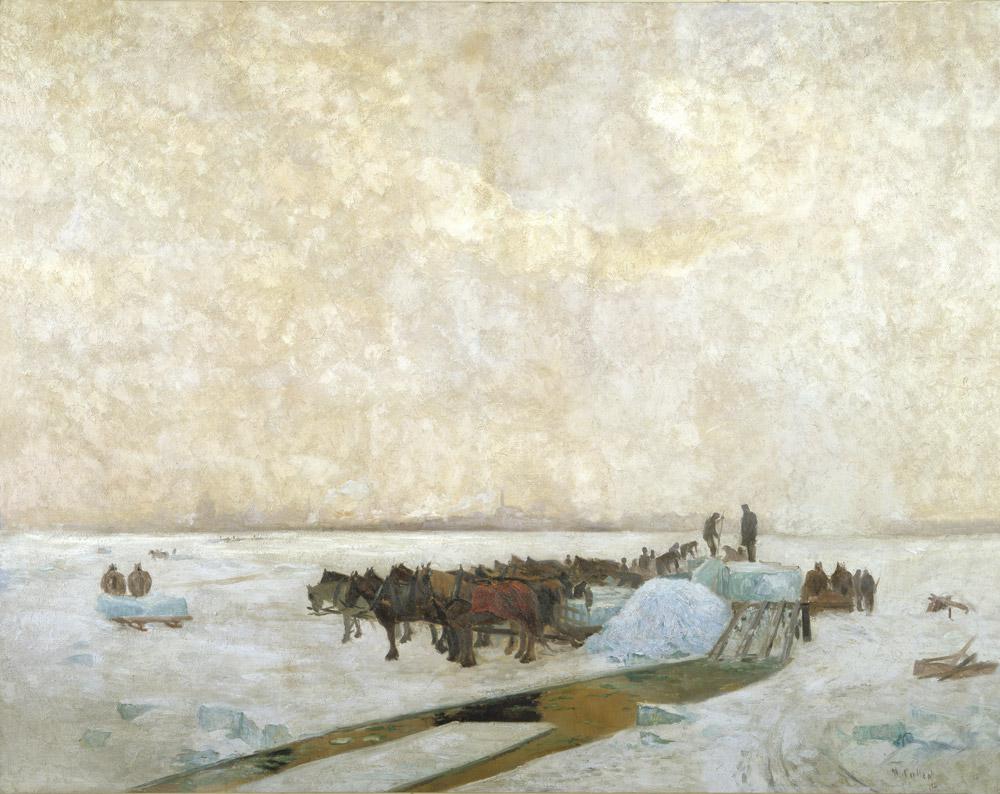Painted in 1914, Ice Harvest is one of a number of treatments of this subject by Maurice Cullen between 1912 and 1920—his most influential years, when his spacious Beaver Hall Square studio in Montreal was the unofficial centre for advanced art in the city. Cullen had wanted to be a sculptor when he first started studying art in Montreal in 1884 at the age of 18, and four years later he travelled to Paris to pursue that goal at the École des Beaux-Arts. He soon switched to painting, however; inspired by the ethereal landscapes of the impressionists, he seemed to touch a natural chord within himself. He was actively encouraged by his teachers, and stayed on in Paris following the completion of his studies, showing frequently in the juried salon exhibitions and even selling a work to the French government. When he returned to Montreal in 1895, it was as a champion of plein-air painting, and through the power of example he became one of the key figures in the transformation of Canadian art in the early years of the 20th century.
Ice Harvest is the largest and the most subtly complex of his treatments. Thick blocks of ice, thousands of them, were cut and dragged from the frozen St. Lawrence River every winter in Montreal—as in most places across Canada—to be stored until the summer, when they would be sold to stock the iceboxes found in most homes, keeping families’ food safe from the heat. It was, then, a simple but central activity of the culture. Cullen has shown the harvesting at a point near Longueuil, with the city of Montreal on the far horizon, a shimmering, pulsing benefactor of the frozen crop. The sky above is unbelievably rich, an almost creamy, shifting blend of light in clouds, smoke and steam, observed in remarkable detail and expressed with the finest artistry. The ice-covered river, too, is an amazing chorus of blues, as the light shines off and through the cut ice and the piles and drifts of snow. But the memorable force of the work resides in the dark, rich, huddled mass of horses at the lower centre, and, most importantly, in the two-pronged gap of open water revealed by the cutting tools, a diagonal force of subtle strength that sets the whole image abuzz like a tuning fork.
This is an article from the Spring 2012 issue of Canadian Art. To read more from this issue, please visit its table of contents.

 Maurice Cullen Ice Harvest 1914 Courtesy Musée des beaux-arts de Montréal / photo MBAM
Maurice Cullen Ice Harvest 1914 Courtesy Musée des beaux-arts de Montréal / photo MBAM







